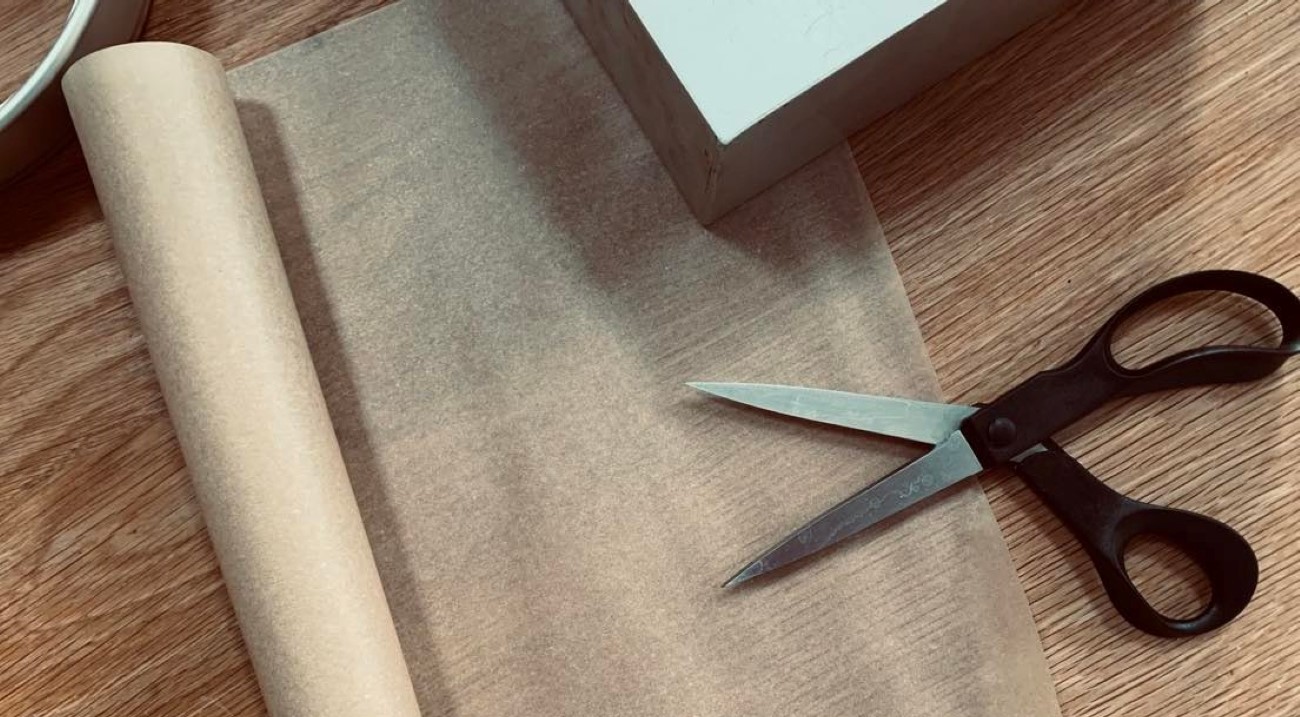Ever wondered what the difference is between baking paper and greaseproof paper? Or did you once upon a time think that they were one and the same thing then bake a tin of flapjack lined with greaseproof paper and quickly realise that not to be the case after munching both the flapjack *and* the paper? Meh.
Baking paper and greaseproof paper look similar. They are both generally either brown or white in colour and are sold on roll. But they are made differently and do different jobs. This little guide outlines the differences between the two. And aims to help you understand how and when to use each of them for best results. No more paper-in-teeth flapjack moments!
WHAT IS BAKING PAPER?
Baking paper is sometimes referred to as baking parchment or parchment paper. It is what you need when your recipe calls for you to line a baking tin or tray. The paper is coated with a very thin layer of silicone on each side. This acts as a non-stick coating and prevents your cakes and bakes from sticking to the paper.
It is food safe and heat resistant, which is why it can be used in baking and in a hot oven (up to 230c).
WHAT IS GREASEPROOF PAPER?
Greaseproof paper is what you need when you want to prevent foods with an element of grease (like a sausage roll or cookie) from leaving oily deposits all over the place. Unlike baking paper, greaseproof paper is not siliconised. It has a protective barrier to prevent fats, oils and other greasy substances from leaching through the paper.
TWO FOR THE PRICE OF ONE?
These days it is possible to buy paper that functions both as a non-stick baking paper and a greaseproof paper, saving you money and kitchen space by only having to buy one roll! If your primary use is for baking, just make sure you check when you see the word greaseproof that it is definitely also non-stick to avoid any of those flapjack horrors!
A LESS WASTEFUL ALTERNATIVE?
An alternative to single-use baking and greaseproof papers – and a much better one in my opinion – is the non-stick reusable liners you can now buy.
Bake-O-Glide® is one such product, which is made from polytetrafluoroethylene (PTFE) coated glass fibre fabric. In far less technical language, this means that it is non-stick, water and grease repellent, capable of withstanding temperatures from as low as -170c to as high as +260c, food safe and easy to clean.
It is my go-to product to replace single-use baking paper at the bakery. I first came across it at home many years ago when I learned that you could use it to ‘fry’ eggs on the AGA hotplate. I loved it from then on and now use sheets of it to line my baking trays for cookies and biscuits and have circles and strips of it to line my cake tins. It saves so much time because you don’t have to hunt down the scissors and start snipping from a roll of baking paper before cracking on with your baking. Happy days 🙂
IN SUMMARY
So in summary, the major difference between baking paper and greaseproof paper is that one (baking) stops things sticking and the other (greaseproof) stops things leaking. Baking paper is what you want when you need to line a cake tin or baking tray.
If you only have greaseproof paper in the house and you can’t get to the shops to buy baking paper, you can – at a push – use greaseproof to line your cake tins. But you must grease the paper with butter/shortening/oil to create a non-stick barrier before baking. It’s still not completely foolproof and you’d be far better off with baking paper, but it is better than not being able to bake at all!
And if you’re a frequent baker, it’s worth investing in some reusable sheets and liners to save yourself time and cut down on waste.
Happy baking 💕








